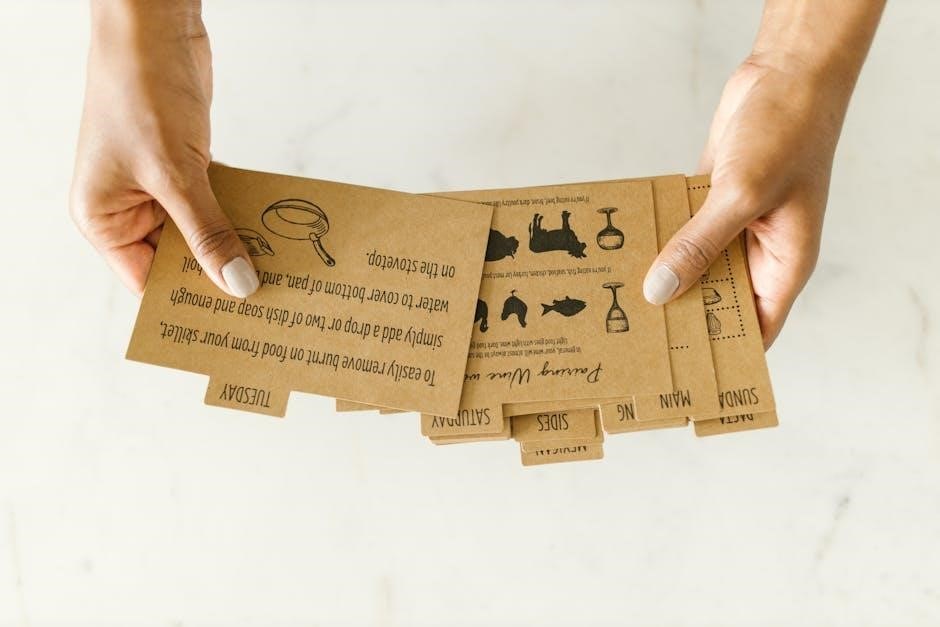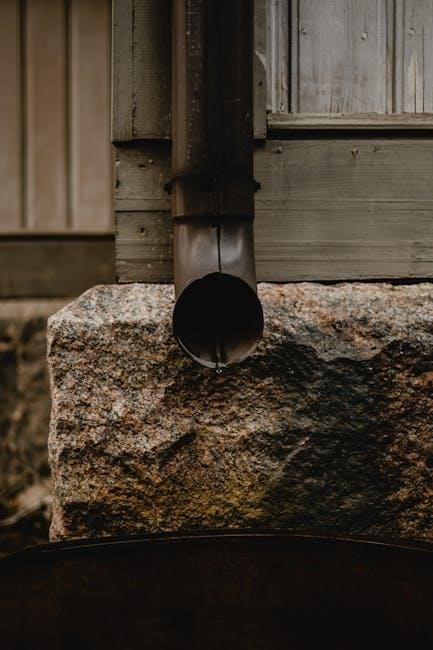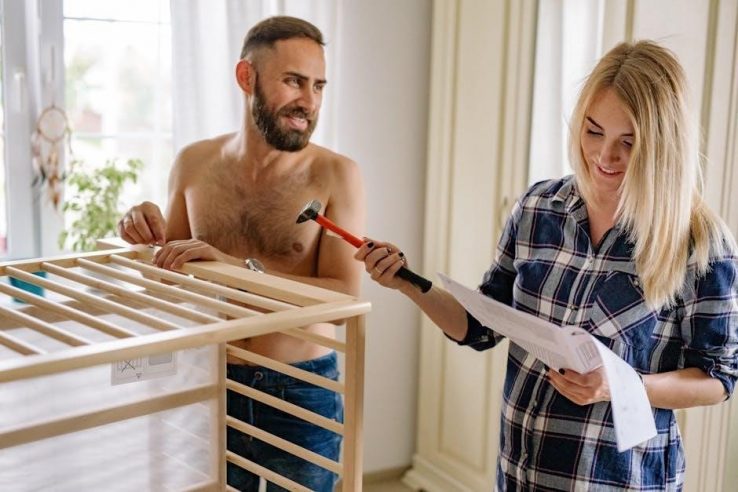The PleurX Drainage System is a medical device designed to remove excess fluid from the pleural or peritoneal space‚ improving breathing and comfort for patients with conditions like malignant ascites or pleural effusions. It consists of a catheter and a vacuum bottle‚ enabling safe and effective drainage at home or in clinical settings. This system is known for its ease of use and ability to improve quality of life for patients requiring ongoing fluid management.
1.1 What is the PleurX Catheter?
The PleurX Catheter is a medical device designed to drain excess fluid from the pleural or peritoneal space. It is inserted into the body and remains partially external‚ allowing for controlled drainage. The catheter is connected to a vacuum bottle‚ which helps remove fluid safely and effectively; It is commonly used for conditions like malignant ascites or pleural effusions‚ offering a minimally invasive solution for fluid management.
1.2 Benefits of Using the PleurX System
The PleurX System offers a minimally invasive solution for fluid drainage‚ reducing the need for repeated medical interventions. It allows patients to manage drainage independently at home‚ enhancing comfort and autonomy. The system is designed for ease of use‚ with clear instructions and a compact design‚ making it a convenient option for ongoing fluid management. This reduces hospital visits and improves quality of life for patients with chronic conditions.
Preparing for PleurX Drainage
Before starting‚ gather all necessary supplies‚ thoroughly wash your hands‚ and prepare a clean workspace. Open packaging carefully and unfold materials to ensure readiness for the procedure.
2.1 Gathering Necessary Supplies
To begin‚ collect the PleurX catheter‚ drainage bottle‚ access tip‚ clamp‚ and support clip. Ensure all components are included and sterile. Additionally‚ have gloves‚ antiseptic wipes‚ and a clean gown ready. Properly organizing these supplies in a sanitized environment ensures efficiency and safety during the drainage process. Always verify the integrity of packaging before use.
2.2 Maintaining Proper Hygiene
Wash your hands thoroughly with soap and water before starting the drainage process. Clean the catheter insertion site with an antiseptic solution to minimize infection risk. Ensure all surfaces and equipment are sterile or cleaned according to the manufacturer’s instructions. Wear gloves to handle the catheter and drainage supplies. Proper hygiene practices are crucial to prevent complications and ensure a safe drainage procedure.
Step-by-Step Drainage Process
Attach the catheter to the vacuum bottle‚ ensuring a secure connection. Gently squeeze the bulb to create suction‚ then release to allow fluid to drain naturally. Monitor the flow and stop once the desired amount is reached or resistance is felt‚ following the recommended limits to avoid complications.
3.1 Attaching the Catheter to the Drainage Bottle
Begin by ensuring the catheter and access tip are clean. Align the catheter with the drainage bottle’s port and securely twist until it clicks. Verify the connection is tight to prevent air leaks. Keep the area sterile to minimize infection risk. Once attached‚ the system is ready for drainage‚ allowing fluid to flow into the bottle under gentle suction pressure. Always follow the manufacturer’s guidelines for proper attachment.
3.2 Initiating the Drainage Procedure
Once the catheter is securely attached to the drainage bottle‚ check for any air leaks by gently squeezing the tubing. Release the clamp on the drainage line to allow fluid to flow into the bottle. Monitor the flow and ensure the vacuum seal is maintained. Stop if resistance is felt or if the maximum drainage limit is reached‚ typically not exceeding 1‚000 mL from the chest or 2‚000 mL from the abdomen.
3.3 Using the Vacuum Bottle for Fluid Removal
Attach the PleurX catheter to the vacuum bottle‚ ensuring a tight seal to maintain suction. The vacuum will gently pull fluid from the pleural or peritoneal space into the bottle. Monitor the fluid flow and check for air leaks by squeezing the tubing. Once the desired amount of fluid is drained‚ close the clamp and disconnect the catheter‚ ensuring not to exceed the recommended drainage limits to avoid complications;

Monitoring the Drainage
Monitor the drainage process closely‚ ensuring the system remains airtight and checking for any leaks. Track fluid volume‚ color‚ and consistency‚ and avoid exceeding recommended drainage limits.
4.1 Checking the Fluid Volume and Color
Regularly monitor the amount of fluid drained to avoid exceeding limits (e.g.‚ 1000mL from chest or 2000mL from abdomen). Check fluid color and clarity; typically pale yellow‚ straw-colored. Note any changes or abnormalities‚ such as cloudiness or blood‚ which may indicate issues. Document findings for medical review and adjust drainage as needed. This ensures safe and effective fluid management.
4.2 Tracking the Amount of Fluid Drained
Accurately record the volume of fluid drained during each session‚ noting the date and time. This helps monitor progress and ensures adherence to recommended limits (e.g.‚ 1000mL from chest or 2000mL from abdomen). Use a drainage log to track cumulative volumes and identify patterns. This documentation is essential for healthcare providers to assess treatment effectiveness and adjust care plans as needed.
4.3 Knowing When to Stop Drainage
Stop drainage when the maximum recommended volume (e.g.‚ 1000mL from chest or 2000mL from abdomen) is reached or if symptoms like coughing‚ shortness of breath‚ or discomfort occur. Discontinue immediately if resistance is felt or if the fluid flow stops. Always consult healthcare providers if unsure or if drainage exceeds guidelines to avoid complications. Proper monitoring ensures patient safety and effectiveness of the procedure.

Safety Precautions and Guidelines
Never exceed 1000mL drainage from chest or 2000mL from abdomen. Monitor for coughing‚ shortness of breath‚ or discomfort‚ and stop immediately if resistance occurs. Ensure aseptic technique to prevent infections and always follow healthcare provider instructions for safe and effective fluid removal. Proper adherence to guidelines minimizes risks and ensures patient safety during the procedure.
5.1 Maximum Fluid Drainage Limits
Do not drain more than 1000mL from the chest or 2000mL from the abdomen in one session. Exceeding these limits can lead to complications. Always monitor for symptoms like coughing or shortness of breath during drainage. If resistance is felt or discomfort occurs‚ stop immediately to avoid injury. Adhering to these limits ensures patient safety and prevents potential health risks.
5.2 Importance of Aseptic Technique
Aseptic technique is crucial to prevent infections when using the PleurX system. Always wash hands thoroughly before handling the catheter or drainage equipment. Maintain sterility during setup and drainage to minimize the risk of contamination. Infections can lead to serious complications‚ so strict adherence to hygiene protocols is essential. Use gloves and clean the catheter site regularly to ensure patient safety and effective drainage.

Post-Drainage Steps
After drainage‚ secure the catheter to prevent dislodgement and clean the site with antiseptic solution to reduce infection risk. Properly dispose of used supplies immediately.
6.1 Securing the Catheter After Drainage
After drainage‚ ensure the catheter is securely fastened to the skin using the provided dressing or tape. Close the clamp on the drainage line to prevent fluid leakage. Check for any signs of kinking or blockages and ensure the catheter remains straight. Monitor the catheter site for proper positioning and stability‚ ensuring it remains securely in place to avoid dislodgement or movement. Regularly inspect the catheter and its connection points for any signs of wear or damage. If any issues are detected‚ address them promptly to maintain the integrity of the drainage system and prevent complications. Always follow the manufacturer’s guidelines for securing the catheter post-drainage to ensure patient safety and comfort.
6.2 Cleaning and Disinfecting the Site
Thoroughly clean and disinfect the catheter insertion site using an antiseptic solution‚ such as chlorhexidine‚ to prevent infection. Gently scrub the area with sterile gauze‚ ensuring no residue remains. Allow the area to dry completely before applying a sterile dressing. Regularly inspect the site for signs of redness‚ swelling‚ or pus‚ and clean it as directed in the instructions for use. Always maintain aseptic technique during cleaning to minimize infection risks and ensure catheter patency. Monitoring and proper hygiene practices are essential for maintaining the integrity of the catheter site and overall patient health.

Troubleshooting Common Issues
Check for blockages or kinks in the catheter‚ ensuring proper flow. Monitor for air leaks or catheter dislodgement‚ and consult a healthcare provider if issues persist.
7.1 Dealing with Blockages or Kinking
If the catheter becomes blocked or kinked‚ stop the drainage process immediately. Gently straighten the catheter to restore flow. For stubborn blockages‚ flush the catheter with sterile saline solution using a syringe. Avoid using force‚ as this could damage the catheter. If the issue persists‚ consult a healthcare provider for professional assistance to ensure proper function and patient safety.
7.2 Managing Air Leaks or Dislodgement
If an air leak or catheter dislodgement occurs‚ immediately stop drainage. Inspect the catheter and connections for any visible issues. Secure the catheter firmly to prevent further movement. Consult the manufacturer’s instructions for specific guidance. If the issue persists‚ contact a healthcare provider promptly to ensure proper repositioning or replacement‚ maintaining patient safety and system integrity.

Maintenance and Care of the Catheter
Regularly clean and inspect the catheter site to prevent infection. Store supplies in a dry‚ clean area. Follow manufacturer guidelines for catheter care and replacement.
8.1 Regular Cleaning and Inspection
Regularly clean the catheter site with antiseptic solution and inspect for signs of infection‚ such as redness or swelling. Ensure the catheter remains securely in place and free from kinks or blockages. Proper cleaning helps prevent complications and maintains the effectiveness of the drainage system. Always follow the manufacturer’s guidelines for cleaning and inspection.
8.2 Storing the Catheter and Supplies
Store the PleurX catheter and accessories in a clean‚ dry place‚ away from direct sunlight. Keep supplies in their original packaging until use to maintain sterility. Ensure all components are within their expiration dates and free from damage. Proper storage helps prevent contamination and ensures the system remains ready for safe and effective use when needed.
Understanding Contraindications
The PleurX system is contraindicated in patients with certain infections‚ such as empyema‚ or those requiring dialysis. Use caution in patients with coagulopathy or bleeding risks.
9.1 When Not to Use the PleurX System
The PleurX system is contraindicated in patients with active infection‚ such as empyema‚ or those with certain coagulopathies. It should not be used in individuals with mechanical obstructions or those requiring dialysis. Additionally‚ patients with severe bleeding disorders or those who are pregnant should avoid using the system. Consult a healthcare provider for specific contraindications.
9.2 Conditions Requiring Medical Supervision
Certain conditions necessitate medical oversight when using the PleurX system‚ such as unstable patients or those with significant comorbidities. Active infections‚ uncontrolled pain‚ or suspected catheter malfunction require immediate medical attention. Patients with compromised skin integrity or those at risk of dehiscence should also be closely monitored by healthcare professionals to ensure safe and effective use of the system.

Disposal and Follow-Up
Properly dispose of used supplies in biohazard containers and follow local regulations. Schedule regular follow-up appointments with your healthcare provider to monitor catheter function and overall condition.
10.1 Proper Disposal of Used Supplies
Dispose of used PleurX catheters‚ drainage lines‚ and fluid in biohazard containers. Seal all materials securely to prevent leakage. Follow local regulations for medical waste disposal. Ensure proper cleaning and disinfection of the area after disposal. Always use gloves when handling used supplies to minimize infection risks. Proper disposal is crucial for maintaining safety and preventing contamination.
10.2 Scheduling Follow-Up Appointments
Regular follow-up appointments with your healthcare provider are essential to monitor your condition and ensure proper catheter function. Schedule appointments as recommended by your doctor to assess fluid drainage‚ check for complications‚ and address any concerns. Proper follow-up care ensures long-term effectiveness and safety of the PleurX system‚ enabling continued management of fluid accumulation.
